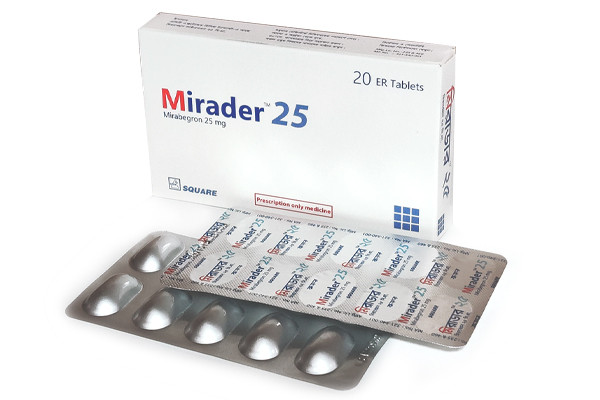

D-Pam Tablet, Diazepam 5 mg
Inhouse product
-
৳11.40
৳12.00 -
৳42.75
৳45.00 -
৳16.63
৳17.50 -
৳2.14
৳2.25
Reviews & Ratings
Indications
D-Pam is indicated for
the short-term treatment of mild to moderate anxiety, excitation, agitation,
fear, aggressiveness, etc. Anxiety reactions caused by stressed conditions,
anxiety states with somatic expression, acute alcohol withdrawal, status
epilepticus, premedication for surgical procedures, febrile convulsions,
insomnia of hospitalized patients.
* রেজিস্টার্ড চিকিৎসকের পরামর্শ মোতাবেক ঔষধ সেবন করুন'
Description
D-Pam is a
benzodiazepine derivative and is a safe tranquillizer with anxiolytic,
anticonvulsant and central muscle relaxant actions. Intravenous D-Pam injection
is widely used in obstetrics and control of status epilepticus.
Pharmacology
Diazepam attaches to
the specific site on the GABA receptor and potentiates the effect of GABA,
which acts by opening chloride ion channels into cells.
Diazepam is absorbed rapidly and completely after oral administration. Peak
Plasma concentration reaches within 15-90 minutes. Mean plasma half-life is 30
hours. Plasma protein binding is 98-99%. Diazepam is metabolized in the liver
with only traces of the unchanged drug excreted in urine. A very small
proportion of the metabolites is excreted through the bile into the intestine
and eliminated with the feces. After rectal administration in suppository form
diazepam is significantly absorbed and peak concentration reaches within 1.5-2
hours.
Dosage &
Administration
Oral:
- Anxiety: 2 mg thrice daily, increased if necessary to 15-30 mg
daily in divided doses. Elderly (or debilitated), half of the adult dose.
- Insomnia
associated with anxiety:
5-15 mg at bedtime.
- Night terrors and
somnambulism in Child: 1-5
mg at bedtime.
IM/slow IV injection
(large vein, a rate below 5 mg/minute):
- For severe acute
anxiety, control of acute panic attacks, and acute alcohol withdrawal: 10 mg repeated if necessary after not less than 4
hours.
- Febrile
convulsion in children:
Slow IV in a dose of 250 mcg/kg.
Rectal:
- In case of
children- A dose of 500 mcg/kg (maximum
10 mg), repeated if necessary.
* রেজিস্টার্ড চিকিৎসকের পরামর্শ মোতাবেক ঔষধ সেবন করুন'
Interaction
Concomitant intake
with alcohol is not recommended. Sedation may be increased due to concomitant
use of neuroleptics (antipsychotics), hypnotics, sedative antihistamines and
CNS depressants e.g., general anesthetics, narcotic analgesics or
antidepressants. D-Pam clearance is increased by concomitant administration of
phonobarbitone and is decreased by administration of cimetidine. Omeprazole and
isoniazide inhibit D-Pam metabolism.
Contraindications
Diazepam is
contraindicated in myasthenia gravis, pulmonary insufficiency, respiratory
depression and hypersensitivity to bezodiazepine.
Side Effects
D-Pam is generally
well tolerated. Higher doses may cause somnolence, dizziness, light headedness,
confusion and ataxia.
Pregnancy & Lactation
Diazepam and its
active metabolites cross the placental barrier and also pass into breast milk.
So, it should be avoided if possible during pregnancy and lactation. US FDA
pregnancy category D.
Precautions &
Warnings
Prolonged use and
abrupt withdrawal should be avoided. D-Pam should be used with caution in
respiratory disease, muscle weakness, history of drug or alcohol abuse, in
hepatic or renal impairment.
Overdose Effects
Sedation, muscle
weakness, profound sleep or paradoxical excitation. In more severe cases
symptoms may include ataxia, hypotonia, hypotension, respiratory depression and
rarely coma and death.
Therapeutic Class
Benzodiazepine
sedatives, Centrally acting Skeletal Muscle Relaxants, Primary anti-epileptic
drugs
Storage Conditions
Store in a cool (below 25˚C temperature) and
dry place protected from light.
Frequently Bought Products
Nervaid Capsule (30' pack), Pregabalin 75 mg
Mirader Tablet (Extended Release) Mirabegron 25 mg
Darboren SC Injection, Darbepoetin Alfa 25 mcg/0.42 ml
Hemorist Syrup 200 ml bottle, Abhayarista
Flindof Tablet, Doxophylline 400 mg
Product Queries (0)
Login Or Registerto submit your questions to seller
Other Questions
No none asked to seller yet
-
৳11.40
৳12.00 -
৳42.75
৳45.00 -
৳16.63
৳17.50 -
৳2.14
৳2.25











![Minicon Tablet (28's) Norgestrel, [For breastfeeding mother] 0.075 mg](https://skpharma.com.bd/public/uploads/all/U1B8sWhXEYYkzK4jS3WjbqXGaO3OBmdGOHYSS8H6.jpg)





